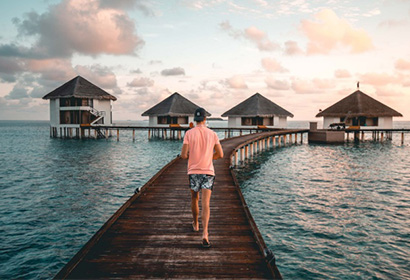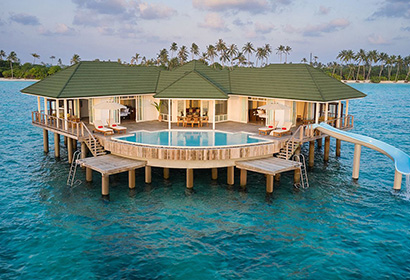Featured Holidays
28.2°C
Today (13-08-2025)
DEALS
HIGHLIGHTS

The Maldives, a collection of over 1,000 coral islands scattered across the Indian Ocean, is the epitome of luxury and natural beauty. Renowned for its overwater bungalows, pristine white-sand beaches, and crystal-clear turquoise waters, it’s a destination that promises tranquility and unparalleled beauty. Highlights include the stunning underwater world, vibrant coral reefs, and some of the world’s most luxurious resorts, offering private islands, personal butlers, and world-class amenities. The capital city, Malé, adds a touch of culture with its mosques, bustling markets, and historical sites.Explore the vibrant coral reefs, teeming with marine life such as manta rays, sea turtles, and colorful fish. Popular dive sites include Banana Reef and Manta Point, where you can witness the breathtaking underwater scenery.Engage in thrilling water activities like jet skiing, windsurfing, and paddleboarding. The calm, clear waters of the Maldives provide the perfect playground for both beginners and experienced water sports enthusiasts.
SEASONS TO TRAVEL
January
Hottest: 31°C Temperature
Coldest: 24°C Temperature
Average: 28°C Temperature
February
Hottest: 31°C Temperature
Coldest: 25°C Temperature
Average: 28°C Temperature
March
Hottest: 32°C Temperature
Coldest: 26°C Temperature
Average: 29°C Temperature
April
Hottest: 32°C Temperature
Coldest: 27°C Temperature
Average: 29°C Temperature
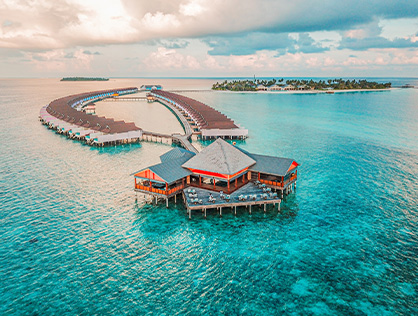
Dry Season (November to April): The dry season is the ideal time to visit the Maldives, offering sunny weather, calm seas, and minimal rainfall. This period is perfect for enjoying the pristine beaches, engaging in water sports like snorkeling and diving, and exploring the picturesque islands. From December to March, the Maldives experiences its peak tourist season, characterized by high demand for accommodations and activities.
Wet Season (May to October): The wet season, or monsoon period, brings increased rainfall to the Maldives, resulting in lush, green landscapes and occasionally dramatic skies. Although the weather can be unpredictable with sporadic showers, these are often brief, leaving plenty of time for activities. The wet season is also less crowded, offering the advantage of lower prices and fewer tourists. For surfers, this is an optimal time as the larger waves enhance the surfing experience. Despite the occasional rain, the Maldives' natural beauty and vibrant underwater world continue to shine throughout this season.
CULTURE & TRADITIONS

Maldivian culture is a rich and vibrant blend of South Asian, African, and Arab influences, shaped by centuries of trade and migration. Islam is the predominant religion, profoundly influencing daily life, traditions, and customs. A vivid expression of this cultural fusion is the Boduberu performance, a traditional event that combines rhythmic drumming, energetic singing, and lively dancing, creating a festive and communal atmosphere. Traditional Maldivian architecture, prominently seen on local islands, features houses constructed from coral stone and palm wood, reflecting the islanders' resourcefulness and adaptation to their environment. Local markets are bustling hubs where visitors can explore a variety of crafts and souvenirs that showcase the island's artistic heritage. Fishing is a cornerstone of Maldivian life, symbolizing the deep connection between the people and the sea. This rich cultural tapestry, combining historical influences with enduring traditions, defines the unique and captivating essence of Maldivian culture.
PREFFERED HOTELS
NATURE & WORTH A VISIT EXPERIENCE
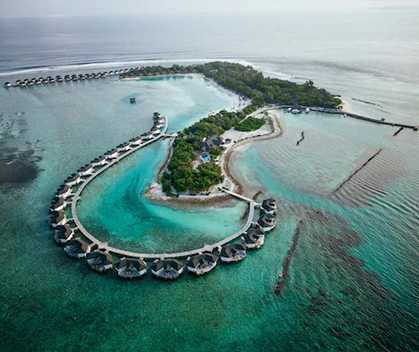
Banana Reef
Banana Reef, located in the North Male Atoll of the Maldives, is one of the country’s most renowned dive sites. Its name comes from the reef’s shape, which resembles a banana when viewed from above. The reef is celebrated for its vibrant marine life, including colorful coral gardens, various species of fish, and occasionally, larger pelagic species like sharks and rays. Divers and snorkelers are drawn to Banana Reef for its clear waters and abundant underwater scenery, offering excellent visibility and a chance to explore diverse marine ecosystems. The reef’s dynamic underwater topography, featuring overhangs and swim-throughs, enhances the adventure for underwater enthusiasts, making it a must-visit destination for both novice and experienced divers.
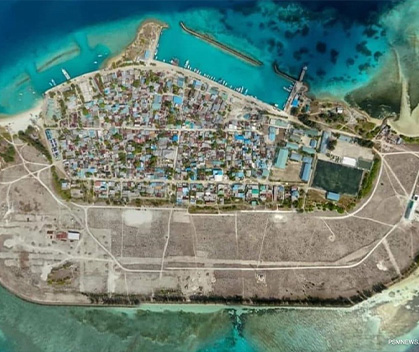
Hinnavaru Thila
Hinnavaru Thila is a notable diving site situated in the Laccadive Sea, part of the Maldives' northern atolls. This underwater pinnacle, or "thila," rises from the ocean floor, attracting a wealth of marine life. The site is renowned for its stunning coral formations and the chance to encounter diverse species, including vibrant reef fish, turtles, and occasional sightings of larger predators like sharks. The topography of Hinnavaru Thila features dramatic walls and ledges, providing exciting exploration opportunities for divers. With its rich biodiversity and crystal-clear waters, Hinnavaru Thila offers an immersive underwater experience, making it a popular spot for diving enthusiasts seeking to witness the Maldives' underwater splendor.
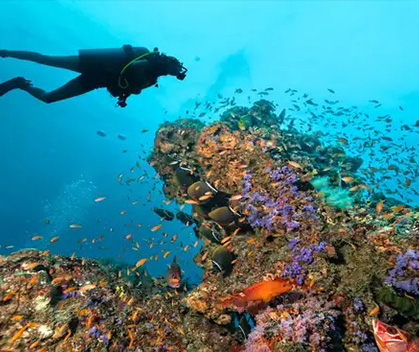
Maaya Thila
Maaya Thila, located in the North Ari Atoll of the Maldives, is celebrated as one of the best dive sites in the region. This underwater pinnacle, known for its exceptional biodiversity, features a vibrant coral reef that attracts a wide variety of marine life. Divers flock to Maaya Thila to experience encounters with schools of colorful fish, elegant manta rays, and occasionally, the elusive whale shark. The site is particularly renowned for its night diving opportunities, where divers can witness nocturnal marine life, including predatory fish and bioluminescent organisms. The clear waters and diverse marine ecosystem make Maaya Thila a premier destination for those seeking an unforgettable diving experience in the Maldives.
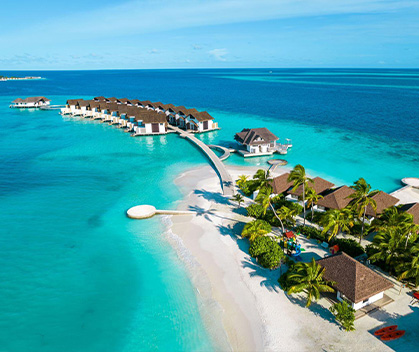
Baa Atoll Biosphere Reserve
Baa Atoll Biosphere Reserve is a protected marine area in the Maldives, recognized for its rich biodiversity and ecological significance. Designated as a UNESCO Biosphere Reserve, this atoll encompasses a series of coral reefs, lagoon systems, and islands, providing critical habitats for a wide range of marine species. The reserve is known for its vibrant coral gardens, diverse fish populations, and seasonal gatherings of manta rays and whale sharks. Conservation efforts in Baa Atoll focus on preserving these vital ecosystems and promoting sustainable tourism practices. The area's natural beauty, coupled with its ecological importance, makes it a prime destination for eco-tourists and marine conservationists looking to explore and protect one of the Maldives' most treasured marine environments.
FOOD PARADISE
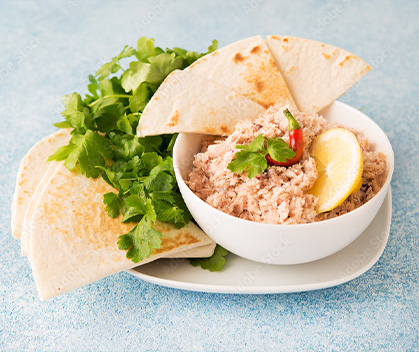
Mas Huni
Mas Huni is a beloved Maldivian dish, commonly enjoyed for breakfast or as a light meal. This traditional dish features finely chopped tuna mixed with grated coconut, onions, fresh chili, and a squeeze of lime, creating a harmonious blend of flavors. The result is a refreshing and satisfying combination that captures the essence of Maldivian cuisine. Mas Huni is typically served with roshi, a type of flatbread, or as part of a traditional Maldivian breakfast spread. This dish reflects the island’s culinary emphasis on fresh seafood and coconut, embodying the simplicity and richness of local ingredients. Its straightforward preparation and vibrant taste make Mas Huni a quintessential part of Maldivian food culture, appreciated for its nutritional benefits and authentic flavors.
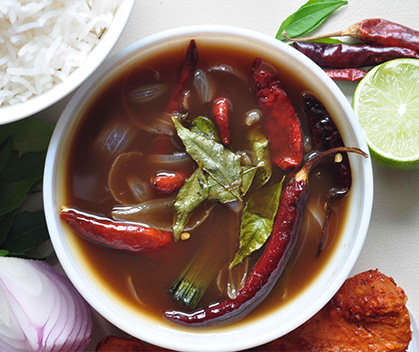
Garudhiya
Garudhiya is a quintessential Maldivian fish soup that captures the essence of local cuisine. This traditional dish is prepared by boiling tuna with water to create a clear and flavorful broth. The broth is typically seasoned with onions, garlic, and chili, infusing it with a savory depth that reflects the Maldivian love for fresh, local ingredients. Garudhiya is traditionally served with steamed rice, alongside lime wedges and a variety of accompaniments, including chili paste, sliced onions, and crispy fried fish. The dish is prized for its comforting and hearty qualities, offering a warm, nourishing meal that highlights the simplicity and richness of Maldivian flavors. Garudhiya remains a staple in Maldivian kitchens, cherished for its ability to bring together fresh ingredients in a satisfying and flavorful way.
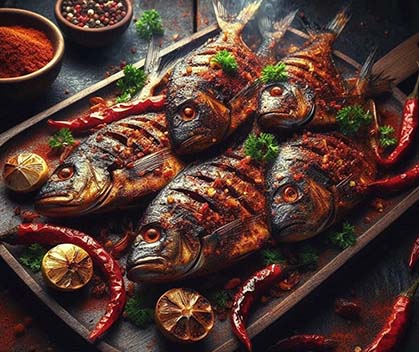
Fihunu Mas
Fihunu Mas is a beloved Maldivian dish renowned for its grilled fish, typically made with locally caught tuna or other varieties. The preparation begins with marinating the fish in a flavorful mixture of spices, including chili, garlic, and turmeric, which imparts a robust and aromatic profile. The marinated fish is then grilled to perfection, resulting in a dish with a crispy, charred exterior and a tender, juicy interior. Fihunu Mas is often served with a side of steamed rice or flatbread, accompanied by fresh salads, chutneys, and sometimes a tangy dipping sauce. This dish exemplifies the Maldivian culinary preference for grilled seafood, showcasing the island’s use of bold spices and simple cooking techniques. Fihunu Mas offers a delectable taste of traditional Maldivian flavors.
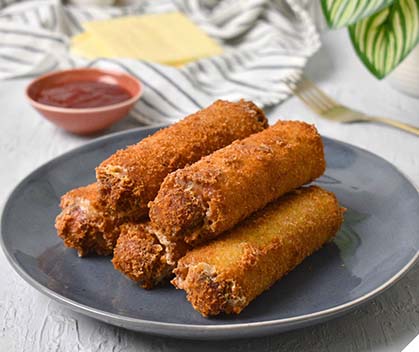
Hedhikaa
Hedhikaa encompasses a variety of traditional Maldivian snacks, often enjoyed with tea or as part of a meal. These savory treats come in many forms, such as pastries, fritters, and small, bite-sized items, each showcasing the rich flavors of Maldivian cuisine. Common examples include masroshi, which are fish-filled flatbreads, bondibaiy, spicy fish cakes, and gulha, small pastries stuffed with a mixture of fish, coconut, and spices. Hedhikaa is celebrated for its flavorful ingredients and reflects the Maldivian culinary tradition of using fish, coconut, and aromatic spices. These snacks are popular in everyday meals. They offer a delicious glimpse into local culinary practices and are an integral part of the Maldivian food experience, embodying the island’s rich and diverse flavors.



